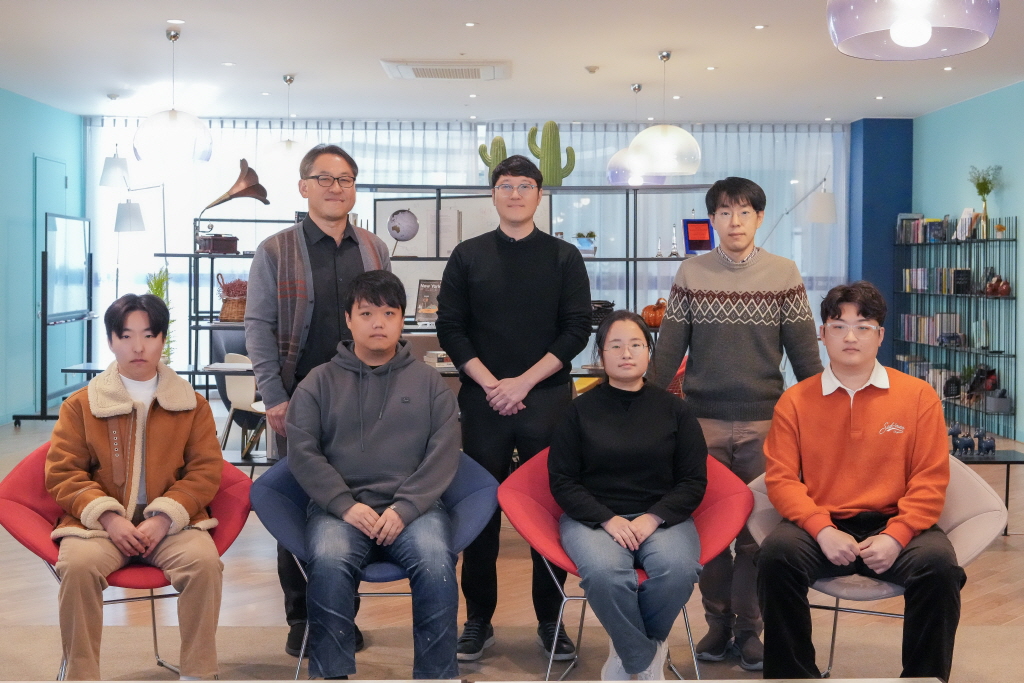UNIST(총장 박종래) 화학과 민두영·권태혁·민승규 교수팀은 청색광(블루라이트; blue light)에 의해 세포 단백질이 손상되는 새로운 경로를 규명했다고 6일 밝혔다.

▲연구진 사진. (좌측상단부터 시계방향)권태혁 교수, 민두영 교수, 민승규 교수, 박민규 연구원, 김서윤 연구원, 김어진 연구원, 김성호 연구원
UNIST, 항산화 시스템 피하는 청색광의 단백질 손상 경로 규명
청색광이 항산화 시스템을 피해 세포 단백질을 손상시키는 과정이 밝혀졌다.
UNIST(총장 박종래) 화학과 민두영·권태혁·민승규 교수팀은 청색광(블루라이트; blue light)에 의해 세포 단백질이 손상되는 새로운 경로를 규명했다고 6일 밝혔다.
청색광은 햇빛, LED 기반 디스플레이 기기, 실내조명에서 방출되는 빛이다. 고에너지 가시광선이라 일반적인 자외선 차단제로는 제대로 막을 수 없고, 눈의 각막과 수정체를 통과해 망막까지 도달할 수 있는 특성이 있다.
체내에 도달한 청색광은 세포 단백질의 산화 손상을 유발해 피부와 눈 건강을 해칠 수 있는 것으로 알려져 있다. 체내에 녹아 있던 산소가 청색광을 흡수해 반응성이 높은 활성산소로 바뀌면, 이 활성산소가 세포의 단백질 사이를 헤집고 다니면서 단백질 표면을 산화 손상시키는 방식이다. 세포 내 항산화 시스템은 이러한 활성산소를 무력화시켜 단백질 손상을 줄일 수 있다.
연구팀이 밝혀낸 단백질 손상 경로는 항산화 시스템이 닿지 않는 단백질 내부에서 일어난다. 단백질 내부에 갇힌 산소가 특정 아미노산과 상호작용하며 청색광의 에너지를 흡수하고, 이를 통해 활성산소로 바뀌는 경로다. 생성된 활성산소는 단백질 내부를 돌아다니며 궁극적으로 단백질 손상을 유발한다.
연구팀은 단백질의 구조에서 착안해 이 같은 경로를 발견했다. 단백질은 아미노산 사슬이 복잡하게 접힌 구조로, 그사이에 무수히 많은 공간이 있어 작은 분자들이 포획될 수 있다고 본 것이다. 다양한 실험, 계산, 통계 및 생명정보학 접근 방법을 활용해 다각도로 이를 입증했으며, 이 단백질 손상 경로를 ‘산소 가둠 광산화 경로(oxygen-confined photooxidation pathway)’로 명명했다.
민두영 교수는 “일반적인 단백질 손상 경로와는 본질적으로 완전히 다른 새로운 단백질 손상 경로를 발견했으며, 세포 내 단백질 전반에 보편적으로 영향을 미칠 수 있음을 확인했다”고 밝혔다.
민 교수는 이어 “새롭게 발견된 단백질 손상 경로는 청색광에 의한 피부, 눈 조직의 노화나 질병 유발의 숨겨진 원리일 수 있다”고 설명했다.
연구결과는 지난달 30일 국제학술지인 네이처 커뮤니케이션(Nature Communications)에 공개됐다. 연구수행은 한국연구재단, 울산과학기술원의 지원을 받아 이뤄졌다.

